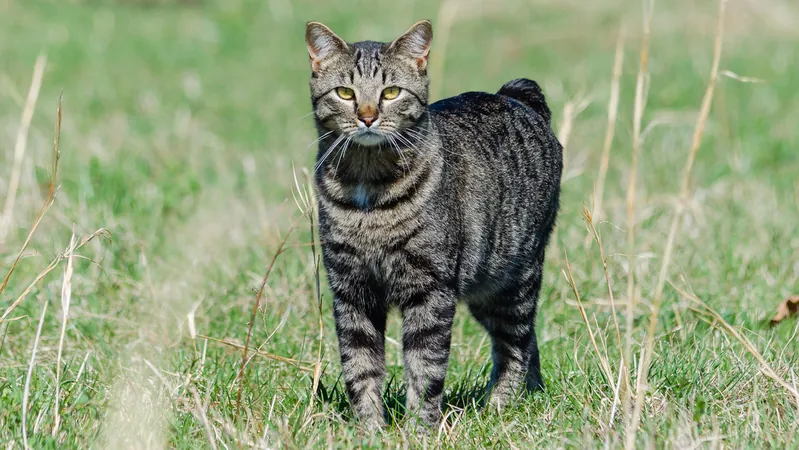
Discover the Enigmatic Manx Cat: A Comprehensive Guide
2025-05-11
Author: Wei
The Unique Charm of the Manx Cat
When you think of the Manx cat, the first thing that often comes to mind is its remarkably short or completely absent tail—a result of a natural genetic mutation. But this charming breed, hailing from the Isle of Man, has much more to offer, including a sweet disposition and a spirited love for outdoor adventures.
A Brief History and Origins
The Manx cat is regarded as one of the oldest natural cat breeds, closely related to both the British Shorthair and the Norwegian Forest Cat. Its distinctive traits have captivated cat lovers worldwide, and its origins trace back to the windswept Isle of Man.
Tail Talk: Are Manx Cats Born Without Tails?
This breed is fascinatingly unique, as Manx cats are born with varying tail lengths, ranging from a full tail to none at all. According to veterinarian Dr. Rebecca MacMillan, this peculiar trait results from a genetic anomaly. However, breeding two Manx cats is discouraged, as they require a tailed partner to maintain a healthy gene pool.
Allergies and Grooming: What You Need to Know
Unlike some breeds like the Balinese or Devon Rex, Manx cats are not hypoallergenic. They have a double coat, similar to a Maine Coon, which increases shedding—especially during seasonal changes. Regular grooming, ideally every day, is essential for keeping their coats mat-free.
Exercise Requirements for a Happy Manx
To thrive, a Manx cat needs about 30 minutes of exercise each day. They love to play with toys, chase automated gadgets, and climb cat trees. Additionally, these independent souls enjoy outdoor escapades, making them natural hunters who relish exploring their surroundings.
The Pros and Cons of Outdoor Living
Outdoor adventures enrich a Manx cat's life, offering them plenty of exercise and mental stimulation. However, there are risks, such as wandering too far or catching diseases. Pet trackers and flea treatments can help mitigate these concerns, allowing your feline friend to enjoy the great outdoors safely.
Understanding Manx Cat Syndrome
One of the key health issues affecting Manx cats is 'Manx syndrome.' This commonly occurs in cats born without tails, leading to severe spinal defects like spina bifida. While surgery may improve their condition, there's no definitive cure. Other health concerns include bowel issues and corneal dystrophy, emphasizing the importance of choosing a reputable breeder.
The Cost of Bringing a Manx Cat Home
If you’re considering adopting a Manx cat, be prepared to spend between $600 and $1,200, depending on various factors like lineage and breeder credentials. This positions them comfortably within the mid-range price bracket for cats.
Is a Manx Cat the Right Choice for You?
For families or individuals seeking an affectionate, playful companion, the Manx cat is an excellent choice. They are loyal, relatively easy to train, and thrive in intimate environments. It's crucial, however, to conduct thorough research and consult reputable breeders due to their predisposition to certain health issues.
Ultimately, the captivating charm and spirited nature of the Manx cat make them a wonderful addition to the right home—just be prepared for a little extra care!




 Brasil (PT)
Brasil (PT)
 Canada (EN)
Canada (EN)
 Chile (ES)
Chile (ES)
 Česko (CS)
Česko (CS)
 대한민국 (KO)
대한민국 (KO)
 España (ES)
España (ES)
 France (FR)
France (FR)
 Hong Kong (EN)
Hong Kong (EN)
 Italia (IT)
Italia (IT)
 日本 (JA)
日本 (JA)
 Magyarország (HU)
Magyarország (HU)
 Norge (NO)
Norge (NO)
 Polska (PL)
Polska (PL)
 Schweiz (DE)
Schweiz (DE)
 Singapore (EN)
Singapore (EN)
 Sverige (SV)
Sverige (SV)
 Suomi (FI)
Suomi (FI)
 Türkiye (TR)
Türkiye (TR)
 الإمارات العربية المتحدة (AR)
الإمارات العربية المتحدة (AR)